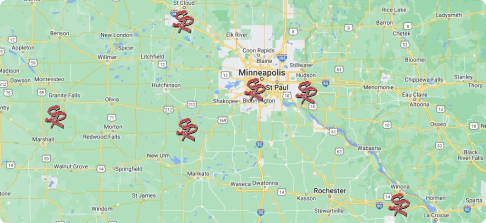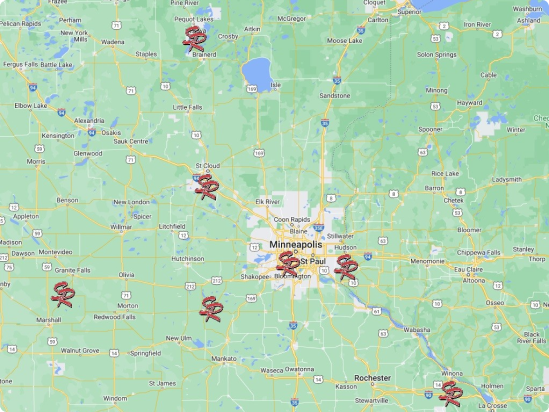Winters in the Midwest are notoriously brutal and unpredictable. Heavy snowfall and low temperatures allow snow to accumulate quickly, and then strange bouts of warm, dry weather cause it to melt before freezing over again. Whatever the winter weather might be, many people breathe a sigh of relief when the first signs of spring appear. While home inspections and maintenance may not be the first things that “spring” to mind after winter, spring is an ideal season to find and fix any issues that might be present.
Here are the five critical parts of your home to inspect every spring.
#1. Your Roof
It’s impossible to understate the important role your roof plays in protecting your home. A damaged roof can allow water to leak into your attic and/or into wall spaces, which allows mold and mildew to grow in both visible and hidden locations. It can also cause wood to warp or rot, destroy drywall, and damage floors and ceilings. Instead of an inexpensive roof repair, you could be facing a substantial bill to repair the damage caused by a roof leak.
Walking on your roof is not advisable unless you have the proper training and safety equipment. However, you can spot many issues without setting foot on your roof. If you are comfortable doing so, you can stand on a ladder to inspect your roof.
If you have asphalt shingles, look for missing, broken, or curled shingles. You also want to look for shingles that have lost their granules (these can often be found in your gutters!). If you have a metal roof, look for panels that are moving or not properly aligned. If your roof covering is tile or wood shakes, look for missing or cracked pieces. You should also look for missing, bent, or cracked flashing around roof penetrations.
#2. Your Siding
If your exterior siding is vinyl, wood, or fiber cement, look for loose or broken boards. You should also check the caulking at seams and around windows and doors. Check for paint that is flaking, blistered, or peeling. If large areas of your exterior cladding are severely damaged, it may be time to consider a siding replacement instead of a siding repair.
The integrity of your siding is crucial. Water that leaks behind your siding can rot your wall supports and destroy your insulation, and it creates a hospitable environment for mildew, mold, and many insects. Your siding also helps prevent the exchange of air between the interior and exterior, so poorly maintained siding can increase your energy bills.
#3. Your Gutters
Cleaning your gutters may not be one of your favorite chores, but it is essential. If your gutters are clogged, water can be forced under the edges of your roof, rotting your decking and underlayment. Clogged, cracked, or sagging gutters can allow water to leak behind your siding or accumulate next to your foundation.
Check your gutters to make sure they are still securely attached. Small holes may be repaired with epoxy, but it is usually better to replace gutters if there are large holes or cracks. As part of your gutter inspection, make sure that your downspouts are clear and that they direct the water at least four feet away from your foundation. Otherwise, you could experience foundation damage and/or a flooded basement.
#4. Your Windows
Ideally, your windows should form a tight barrier that prevents the exchange of air between your home’s interior and the outside world. Without a proper seal, the air you are paying to heat or cool could be flowing out of your windows. Water penetration could also be causing damage to structural components as well as your windowsills.
Inspect your windows from the interior, and if possible, inspect them from the exterior as well. Look for damaged and missing glazing or caulking, then inspect the weather stripping. If applicable, check the frames and sills for rotten or warped wood. Test the operation of each window to make sure that it can be easily opened and closed. If several windows can no longer be safely operated or have damaged frames, you might want to consider a whole-house window replacement.
#5. Your Attic
Attic insulation is a critical part of regulating the temperature of a home’s living spaces. The amount of insulation you need depends on several factors but, as a general rule, if you can see the tops of the attic floor joists, you do not have enough insulation. As part of your attic inspection, look for signs of mold, mildew, or water damage on your insulation as well as your rafters.
If you have mold in your attic, the spores will likely find their way into your living areas. This can affect the quality of the air that you and your family must breathe. If you note signs of water infiltration or gaps that could allow water to infiltrate, you could be facing the same types of damage caused by a leaking roof.


